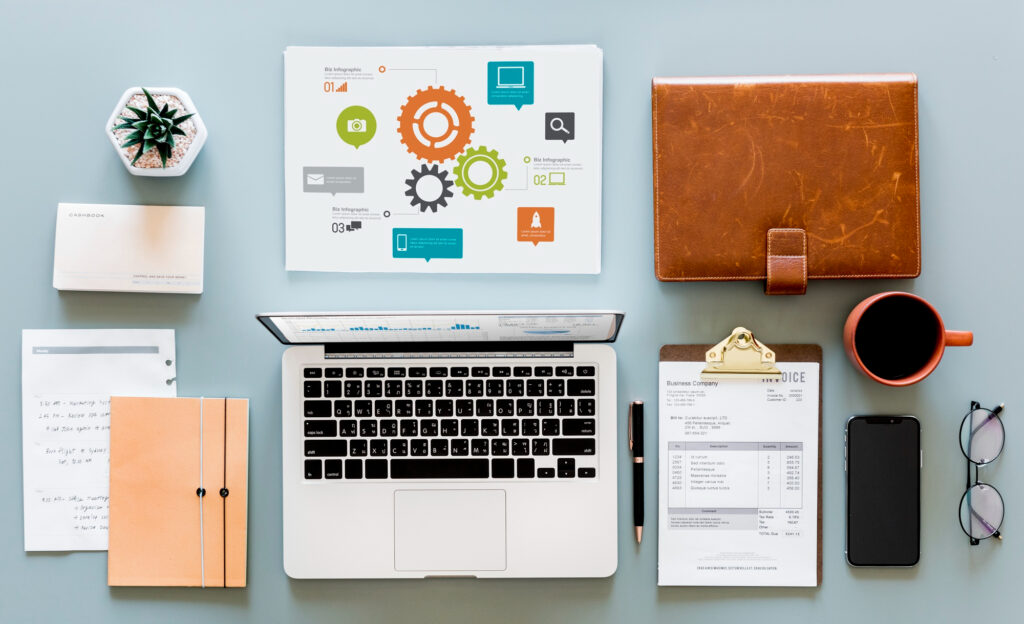#productivityhacks, #timemanagement, #selfcare #personaldevelopment, #worklifebalance
As a year of working in a remote setup in the talent sourcing space comes to a close, reflecting back on my experience, I have learned a great deal about time management. The shift to remote work has brought its own set of challenges, including the need to be more self-motivated and disciplined with my time. I have had to learn how to effectively balance my work responsibilities with my personal and home life, and to find ways to stay focused and productive despite the distractions of working from home.
One of the biggest lessons I’ve learned is the importance of setting clear boundaries between work and personal time. This has included setting specific working hours, taking regular breaks, and creating a dedicated workspace that is separate from my living space. By creating a consistent routine, I was able to increase my productivity and achieve a better work-life balance. I also learned how to prioritize my tasks and manage my time effectively. I learned to set clear goals, break them down into smaller manageable tasks, and then organize them based on priority and urgency.
The Zeingarnik Effect
To complete a task all you need to do is to get it started. Is it enough though?
Zeingarnik says it is. The Zeigarnik effect, named after psychologist Bluma Zeigarnik, states that people tend to remember incomplete tasks that they started but did not complete, better than finished ones.
You might be wondering: does this mean if I open all my emails at the beginning of a work day, I won’t ever miss a deadline again? I wish it was this simple in practice. The truth is that while this psychological phenomenon has been proven right several times, I believe there is more to the equation.
My Top3 time-management tools:
Having under my radar for the past year tricks and tips on how to create an inspiring remote work setup, and strive to maximize productivity while keeping the balance between work and personal time, I feel confident to share with you my current favourite time-management tools.
1. Eat that Frog Technique
To get the most challenging task out of the way and feel accomplished. Beneficial for people who tend to procrastinate.
Are you tired of feeling sluggish, constantly putting off important tasks? Well, it’s time to wake up and smell the coffee, or in this case, time to wake up and “Eat That Frog”!
Introduced by Brian Tracy, it is the ultimate time-management strategy that will turn you into a productivity ninja. It’s simple, as soon as you wake up, tackle that daunting task head-on! That’s right, I’m talking about that one task that’s been looming over you, the one that makes you want to pull the covers over your head and hide. You know the one, it’s the equivalent of eating a live frog first thing in the morning, but trust me, it will be the best decision you make all day.
Here is how it works. Start your day by conquering the frog — identifying the most difficult task, the one you’ve been putting off and dreading. It may not be the most urgent task on your list, but it’s the one that will give you the biggest sense of accomplishment. Getting it out of the way will set the tone for the day, and you’re more likely to get the ball rolling to carry through the rest of the workday.
Once you’ve finished that task or project, the rest of your tasks will seem easier in comparison. This is because completing a difficult or complex task can give you a sense of accomplishment and boost your confidence, making it easier to tackle the next task on your list.
Press enter or click to view image in full size

Any day that you eat your frog is a good day. Furthermore, following the method means you’ll be making progress on something meaningful on a daily basis.
Get Andrea’s stories in your inbox
Join Medium for free to get updates from this writer.
Also, this method calls for focusing on one task a time, instead of multitasking. So, next time you’re feeling overwhelmed by your to-do list, try focusing on just one task, and you’ll be amazed at how much easier the rest of your tasks will feel in comparison.
2. The Pomodoro Technique
To increase focus, energize, and boost productivity. Beneficial for people who often feel stressed and burnt out.
Take a break, have a pomodoro! Are you wondering if there’s a way to boost your productivity without working harder or longer? Look no further! Introducing the power of micro-breaks.
Taking breaks can help reduce stress, refuel your energy levels, improve productivity and focus, and prevent decision fatigue. Think about it, when you take a break, you’re allowing yourself the time and space to relax, unwind, and rejuvenate. This can help reduce stress, improve your mood, and boost your overall well-being.
So, instead of powering through your work without taking a break, try the Pomodoro technique. Developed by Francesco Cirillo in the late 1980s, it is based on the idea that frequent breaks can help increase productivity and reduce burnout. The basic premise of the Pomodoro Technique is to work in focused, uninterrupted 25-minute blocks of time, referred to as “Pomodoros.” After each Pomodoro, you take a short 5-minute break to rest and recharge. The technique involves using a timer, whether it’s a physical timer or a digital one, to keep track of your 25-minute work sessions and 5-minute breaks.
After four Pomodoros, it’s recommended to take a longer break, usually 15–30 minutes, to rest and recharge. The idea behind the longer breaks is to prevent burnout, give time for the brain to assimilate new information, and help to maintain attention throughout the day. Repeat this cycle throughout your workday.
Press enter or click to view image in full size

By scheduling your work time and breaks in advance, it helps increase focus, reduce procrastination and increase productivity. It’s a win-win situation!
Taking a break is an important part of self-care, and it is not a sign of laziness or irresponsibility. Instead, it is a way to recharge your batteries and replenish your energy, so that you can be more focused, productive, and effective in your work. When you take a break, you are allowing yourself the time and space to relax, unwind, and rejuvenate. In turn, this can help you be more motivated, engaged, and productive when you return to your work, allowing you to be at your best both physically and mentally.
Give it a try, you’ll be amazed at the difference it can make to your workday, and how it helps to reduce mental fatigue and keep you focused throughout the workday. Trust me, you’ll thank yourself later.
3. Pickle-jar Theory
To prioritize your tasks and be efficient. Beneficial for those who tend to jump between unfinished or less significant tasks.
Are you struggling to set priorities and manage your time effectively? The Pickle Jar Theory is here to help!
The Pickle Jar Theory is a powerful and visual way to determine what is truly important and what is not. It’s a metaphor that serves as a reminder to focus on the things that matter most, and to eliminate the distractions and unimportant tasks that fill up our days.
Imagine a big glass pickle jar. The jar represents your time and energy. Now imagine filling the jar with a large number of fist-sized rocks. These are the important, high-priority tasks in your life. But wait, there’s more! Next, add in some smaller pebbles, these are the less important but still necessary tasks. And finally, add in a lot of sand, these are the unimportant tasks, such as checking social media or watching TV.
Press enter or click to view image in full size

The important lesson here is that if you try to put the sand (unimportant tasks) into the jar first, you’ll never have enough room for the rocks (important tasks). But if you put the rocks in first, you’ll be able to fit the pebbles and sand in as well.
The Pickle Jar Theory helps you to set your priorities for daily life, plan your tasks in such a way, that you have time to spare instead of too few hours in the day. It is popular for time management and was written about by Stephen Covey in his book 7 habits of highly effective people.
Start prioritizing your tasks today and see the difference it can make in your daily life. Make sure the big, important rocks are in the jar first, and watch how much more you can accomplish!
Time management isn’t a one-size-fits-all solution, but by experimenting with different methods, you’ll find what works best for you and your specific needs. Now that you know a couple of my favourites, I’m excited to hear about what methods you find to be effective in managing your time.
And don’t forget, when you finish a task, you’re not just crossing off an item on your to-do list, you’re also taking a step closer to reaching your goals and making progress in your life.







